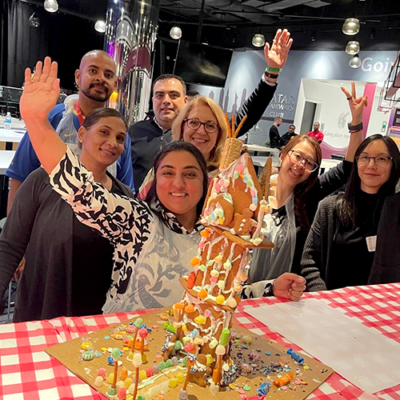Employees across all professions have realized that if they aren’t happy with their current employer, there are plenty of other fish in the proverbial sea. So, it’s no wonder why the current job market resembles a sports arena where employers are fighting tooth and nail to win over and retain high-value talent.
Virtual and remote work conditions are only adding more complexity to an already complicated situation. Those who have never considered working from home permanently are now discovering that they can stay productive and deliver results from anywhere. All this is driving companies to be more appreciative and grateful to the people working for them.
One study found that employees who are recognized for their work are 63% more likely to stay with that organization. Millennials, in particular, want to work for companies that don’t just mirror their own personal values. Rather, they are looking for companies that actively appreciate and recognize what they bring to the table.
Downloadable Individualized Recognition Survey Here
What Can Employers Do to Recognize Talent?
Showing appreciation to your employees will not strain your budget. In fact, 65% of employees prefer non-cash incentives. This means the floor is wide open for creativity in finding ways to recognize your staff.
Here are a few things to keep in mind when considering how to show individualized recognition to your employees::
Communicate Openly – It might seem like a no-brainer, but open communication is the most potent form of appreciation. Check in with new and senior members of the team on how their work is going and what challenges they might be facing. By including your employees in the conversation, you are making them feel like they are part of the decision-making process in your organization. This approach will also help you build trust and loyalty.
Be Genuine – Nothing will drive your employees away faster than the feeling of being patronized. You should be genuine and honest when communicating with your employees. Ask them questions and listen to what they have to say. Remember details about their lives and follow up the next time you see them. In short, don’t treat connecting with your employees like a chore, but as an opportunity to deepen the relationship.
Show Flexibility – As employees explore new opportunities, they are looking for flexible work environments and schedules. After nearly two years of remote work, employees value companies that give them the freedom to choose between working from home or the office. Work with your team to find a solution that fits everyone, rather than just dictating the terms.
Offer Recognition – With more employees working in hybrid or fully remote environments, it’s critical not to forget that they’re still part of your team. Make the effort to ensure equal recognition to all team members, no matter their physical location. Give them a shout-out at your next team meeting or shoot them an email, recognizing and thanking them for their hard work. You could even CC a senior leader or executive, so they see what a valuable asset this person is to the team.
Check-in Frequently – Don’t wait for the annual review to give feedback on how well your employees are doing. Ensure frequent touchpoints, praise them for their hard work, and give suggestions on how they can improve. Keep the conversation informal and position it as an ongoing way to help them grow and improve.
Make Time for Fun – Sometimes your team just needs to put the work away. Show them you appreciate their hard work by encouraging them to take a break during work hours. Plan opportunities for your team to let loose and have fun together with a virtual or in-person team-building event such as Virtual Happy Hour or the Do Good Bus.
Practice Intentional Appreciation
Intentional appreciation means actively observing your employees to find something positive that you can acknowledge or reward. The purpose of intentional appreciation is to show your employees that you value their contributions to the company as a whole and your business objectives.
In fact, a survey by Gallup found that recognizing employees once a week is the best frequency for keeping motivation high. You could even go a step further and show appreciation on a daily basis. For example, if your company has a set of core values, you could regularly acknowledge members of your team who behave in the spirit of those values.
Even when you’re discussing difficult subjects or mistakes that have been made, make it your objective to find a positive angle. Encourage your team to experiment, make mistakes, and teach them how to leverage failure to grow and learn.
Encouraging failure at work can help you innovate faster and stay ahead of the competition. Through failure, employees learn how to do things more effectively, which could result in higher customer satisfaction down the road.
Creating this kind of culture will leave employees feeling motivated with no real desire to find work anywhere else.
Dear Employee: It’s All About You!
Putting these concepts into practice can be daunting, especially if you’ve never done something similar in the past. To help you get started, we’ve created the “Show Me the Love!” survey.
This survey is a downloadable asset you can print out and distribute to your team to learn about their preferred method of spreading appreciation. Use it to also identify which types of incentives motivate them the most.
DOWNLOAD THE “SHOW ME THE LOVE!” SURVEY
People are individuals and it’s a mistake to think you can find a single form of appreciation that will resonate with everyone. Knowing how your employees want to connect with you will help you design a work culture that values them the way they want to be valued. It doesn’t do anyone any good if you debut a new initiative that everyone finds demotivating.
Appreciating your employees is critical, not just for hiring the best staff for the job, but also to keep them engaged and motivated. TeamBonding is your go-to source for team building and motivating employees. The “Show Me the Love!” survey is just one more tool to help you ensure your employees feel appreciated, recognized, and above all — respected.













